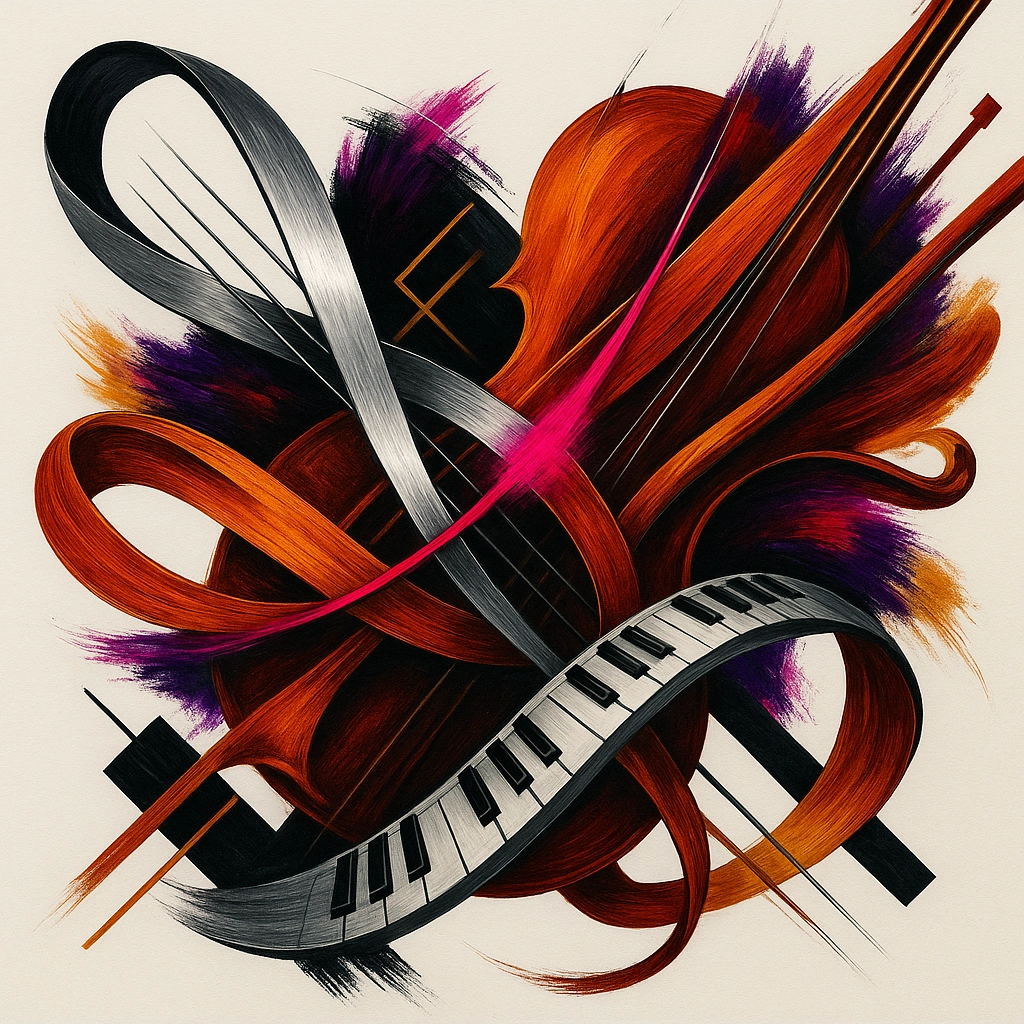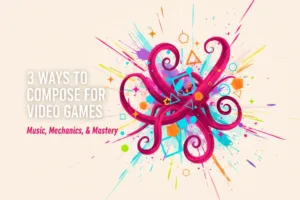
Integrating Instruments & Orchestration: Practical Tips for Composers
- Posted by Filip Sijanec
- Date September 4, 2025
- Comments 0 comment
Reading time: 6 minutes
Whether you’re crafting your first film score or refining your orchestral voice, mastering instrument integration and orchestration is one of the most crucial skills you’ll develop as a composer. The difference between amateur and professional work often lies not in the melody itself, but in how effectively you blend instruments to create compelling, cohesive soundscapes. If you’re in NFTS composition preparation or exploring RCM composition lessons, this is the bedrock admissions panels listen for (and it’s exactly what students searching for composition lessons NFTS usually want to strengthen).
Let’s dive into practical strategies that will transform your compositions from simple ideas into rich, dynamic orchestral experiences.
Start with Piano: Your Orchestral Sketchpad
The piano isn’t just another instrument in your arsenal: it’s your compositional laboratory. Every professional composer I know, regardless of their primary instrument, turns to the piano for sketching ideas. Why? Because it’s the perfect tool for testing harmony, rhythm, and instrumental interactions all at once. It’s also a powerful habit during preparation for composition courses and portfolio preparation for composition exams.
When you sit at the piano, you’re essentially conducting a mini-orchestra with ten fingers.
You can play bass lines with your left hand while exploring melodic ideas with your right, instantly hearing how different voices interact. This hands-on approach reveals problems and possibilities that might remain hidden when working purely with notation software or in your head.
Pro tip: Don’t just play your melodies: play the entire orchestral reduction. If it doesn’t work on piano, it probably won’t work with a full orchestra. The piano forces you to make decisions about voice leading, harmonic rhythm, and textural density that will serve you well when orchestrating.
Piano and Strings: A Perfect Partnership
One of the most effective instrument combinations you’ll work with is piano and strings—a staple in film and classical composition courses. This pairing offers incredible flexibility and has been a cornerstone of film scoring for decades. Here are three proven strategies for integrating these instruments:
Strategy 1: Rhythmic Role Assignment
Instead of having strings play everything, assign rhythmic patterns to the piano while the strings handle sustained notes. This creates a natural division of labour that prevents muddiness in your orchestral texture. The piano’s percussive attack cuts through string sustains beautifully, providing rhythmic drive without competing for the same sonic space.
Strategy 2: Melodic Focus, Harmonic Support
Keep your strings handling the main melodic lines while the piano provides harmonic support and accompaniment figures. Strings excel at lyrical, singing melodies, while piano can handle complex harmonic progressions and rhythmic patterns that might be awkward for bowed instruments.
Strategy 3: Call and Response
Use a piano for responses or call-and-response phrases with strings. This technique creates conversation within your music and helps maintain listener interest. The contrasting timbres of struck strings versus bowed strings create a reorganising natural dialogue that draws the ear forward.
Avoiding the Overload Trap
One of the biggest mistakes I see in student compositions is instrumental overloading. Just because you can write high, sustained notes doesn’t mean you should. Those soaring violin lines might look impressive on paper, but they can overpower your entire ensemble and, frankly, exhaust your players. It’s the kind of issue you can iron out quickly in private composition lessons or 1-to-1 composition mentorship.
Long, high notes are musical quicksand: they seem stable but can sink your entire arrangement. They mask other instrumental voices, create tuning problems, and unnecessarily tire musicians. Instead, consider these alternatives:
- Use shorter note values with strategic rests
- Employ dynamic contrast rather than constant fortissimo
- Distribute high notes among different instruments rather than concentrating them
- Think about the physical demands you’re placing on performers
Remember, sustainable orchestration isn’t just about what sounds good: it’s about what musicians can actually play effectively over the course of an entire piece or scoring session.
The Art of Role Reassignment
When your orchestration feels cluttered or unclear, the solution often lies in reassigning instrumental roles within sections. This is where your analytical skills as a composer really shine.
Ask yourself: Does every violin need to play the same line? Could some violins take the melody while others provide rhythmic accompaniment? What if the violas carried the harmonic foundation while cellos added a counter-melodic line?
Role reassignment creates clarity and balance in ways that simple dynamic markings cannot. It’s like reorganising, making a conversation: instead of everyone talking at once, you’re creating space for different voices to be heard distinctly.
Modern Orchestration: Blending Acoustic and Digital
Today’s composers have unprecedented tools at their disposal. Digital Audio Workstations (DAWs) and high-quality sample libraries allow you to experiment with orchestrations before committing to expensive recording sessions. But there’s an art to making virtual instruments sound natural and integrated. Strong mockups are often a key part of NFTS composition preparation, so practice making them musical, not just loud.
When blending live instruments with samples, focus on timbral consistency. Record your live instruments with close-miking techniques to capture clean, dry signals that can be processed to match your virtual orchestration. This approach ensures that your acoustic piano doesn’t sound like it was recorded in a cathedral while your string samples sound like they’re in a studio booth.
Create natural diversity between takes when working with live musicians. Encourage different bow techniques, vibrato styles, or even switching between instruments within the same family. These slight variations add the human imperfections that make orchestrations feel alive rather than mechanically precise.
Experimentation Within Structure
While technical knowledge provides your foundation, creative experimentation separates good orchestrators from great ones. Don’t be afraid to try unconventional instrument combinations or extended techniques. Some of the most memorable film scores come from composers who weren’t afraid to pair a prepared piano with a string quartet or blend synthetic sounds with acoustic instruments.
However, experimentation works best within a structured approach. Prepare your unusual sounds carefully: if you plan to use extended techniques or non-traditional instruments, record them separately, allowing for complete control over timing and dynamics.
Context Is Everything
Your orchestration choices should always serve the musical context and intended purpose. A delicate chamber piece requires different approaches than an action film sequence. Consider your listener: Are they in a concert hall focusing intently, or are they watching a film where your music supports dramatic action?
Collaboration with performers throughout your orchestration process provides invaluable insights. Musicians understand their instruments’ capabilities and limitations in ways that notation alone cannot convey. A quick conversation with a string player might reveal performance techniques that could transform your entire approach to a particular passage.
Building Your Orchestral Voice
Developing skill in integrating instruments and orchestration is like learning a new language: it requires consistent practice, careful listening, and gradual expansion of your vocabulary. Start with simple combinations, such as piano and strings, master those interactions, and absolute then gradually add more complex instrumental relationships.
Listen actively to orchestral music across all genres. How do film composers create tension through orchestration? How do classical composers achieve transparency in dense textures? What techniques do contemporary composers use to blend acoustic and electronic elements?
Your orchestral voice emerges from the intersection of technical knowledge and creative intuition. The more you experiment with instrument combinations, the more naturally you’ll hear orchestral possibilities in your compositions.
Every great orchestrator started exactly where you are now: with curiosity, some basic knowledge, and a willingness to experiment. The piano is your laboratory, your ensemble is your canvas, and your imagination is the only absolute limit. Start sketching your ideas today, and let the instruments teach you how they want to be heard together.
Filip Sijanec is an award-winning composer and educator based in London. He serves as Professor at the Royal College of Music and NFTS, and teaches composition and music technology at ICMP and ThinkSpace, mentoring aspiring composers. He is the composer for an Oscar-nominated film and creates original music for film, games, theatre, and commercials.
You may also like

How to Compose Music for Films

How to Compose Music for Video Games

